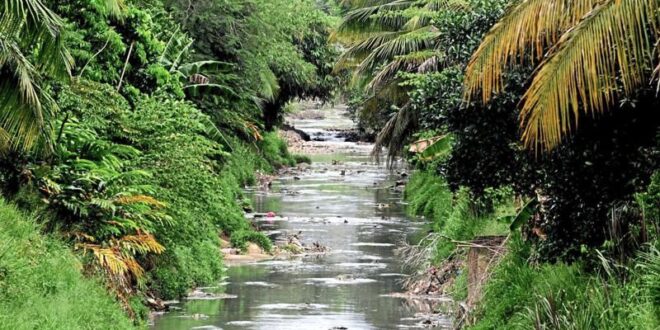IPOH: Environmental pollution must be looked at from a big-picture perspective to identify weaknesses, as merely increasing fines under new amendments to the law will not solve the problem, says the Environmental Activists Society (Kuasa).
Its secretary Noor Ismady Ahmad Radzuan said Kuasa encountered several issues concerning river encroachment and a change in the river shape in Manjung.
“We lodged complaints (on the encroachment) with various agencies, including the Irrigation and Drainage Department but were told that they were unable to take action as that falls under the purview of the Land Office.
“So, this is the weakness that we see – the buck is passed from one department to the other. There needs to be systematic action to avoid too much bureaucracy,” he said.
ALSO READ: Unending lessons from Sg Kim Kim disaster
Noor Ismady said Kuasa had also forwarded its views to the local government for enhanced enforcement in the issuance of planning permissions, especially relating to shrimp pond operations.
“These operators are also the cause of rivers being polluted, not excluding the Sungai Raja Hitam in Ayer Tawar, Manjung, which was declared the most polluted river in the country in 2022.
“Also, in Manjung, our worry concerns illegal agriculture settlers who only request permits to carry out their activities when the government takes the land back.
“When we went to the Changkat Keruing forest that was gazetted last year to replant mangroves, we spotted former illegal shrimp ponds.
“We also received information that these operators have requested permits.
“These operators are the main contributors to river pollution. We are worried that the river reserve will be damaged if the matter is not tackled,” he said.
ALSO READ: Ramping up enforcement
Kuasa, he said, has received complaints from the local community, especially in Changkat Keruing, every time a river turns black as these residents are the closest and most affected by pollution due to plantation, aquaculture, industrial and shrimp pond activities, as well as factories.
“We were informed by residents, especially fishermen and anglers, that during low tide, many riparian zones are covered in silt or remnants of aquaculture activities.
“There’s a stink. Fishermen and anglers informed us that in the past, it was easy to get various species of fish, crabs, snails and shrimps in this river but today, they can no longer find such produce.
“Residents have also told us that not many berembang trees are left upstream, and these trees are home to fireflies,” he added.
ALSO READ: Public urged to combat pollution
Sahabat Alam Malaysia (SAM) field officer Meor Razak Meor Abdul Rahman feels that the Environment Department’s (DOE) jurisdiction should go beyond just taking action against the disposal of waste or discharge of effluents by factories.
“Rivers also get polluted due to logging, land clearing, agriculture and aquaculture activities,” he said.
Meor Razak claimed, however, that when SAM reported such cases to the DOE, they were told that these were not under its jurisdiction.
“So, it is not that factories are the sole culprits that cause pollution in rivers,” he added.
Perak science, environment and green technology committee chairman Teh Kok Lim said the pollution level in Sungai Raja Hitam was now at Class Three under the Water Quality Index, compared with Class Five in 2022.
He said these were the findings from monitoring carried out by the Perak DOE this year.
ALSO READ: Swift action by LUAS prevents river pollution in Selangor
However, there was still a need for immediate intensive treatment because the water cannot be used to supply the community there, he added.
“The river’s water quality has improved but close monitoring continues along the stretch of the river in accordance with DOE’s jurisdiction under the Environmental Quality Act 1974,” he said.
On March 15, it was reported that according to the Environment Quality Report 2022, Sungai Raja Hitam had become the most polluted river in Malaysia when it was put under Class Five based on the National Water Quality Standard.
Teh said two crude palm oil processing factories believed to be the cause of severe water pollution in the river had been subjected to legal action, including a RM85,000 compound.
ALSO READ: Pollution levels still a concern in Johor’s waterways
“There is also a large number of fish and shrimp breeding ponds along this river, which contribute to the pollution.
“However, DOE’s enforcement is on industrial effluents, sewage and leachate from solid waste transfer stations and landfills.
“There is no specific provision under the Environmental Quality Act for enforcement on the release of animal husbandry waste,” he said.
Perak DOE director Datuk Dr Mohammad Ezanni Mat Salleh said it was drafting a paper on changing the conditions for discharging industrial waste downstream to waterways from Standard B to the more stringent requirements in Standard A, just like how it was done in several states, including Johor, Sabah and Sarawak.
He said the proposal would be brought to the state executive council meeting this year for approval.
 BeritaKini.biz Berita Viral Terkini di Malaysia
BeritaKini.biz Berita Viral Terkini di Malaysia





